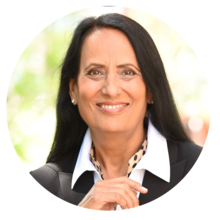About this Presentation
Dynamic Buffer Management (DBM) is an important component of TOC implementation in distribution systems to protect product availability against fluctuations in market demand. DBM must ensure that buffer size at any point in time stays true to the fundamental definition of ‘Maximum demand during Replenishment Lead Time (RLT), adjusted for supply reliability’. However, we find that in many TOC implementations, buffers drift away from this definition over a period of time, resulting in stockouts and excess inventory. The main reason for this drift is the presence of demand drivers which impact future demand but are not considered in DBM buffer sizing rules. Besides, buffer resizing is lumpy and infrequent, which creates demand latency and makes buffers out of sync with market demand. Proposed changes in DBM make it more responsive and truer to the definition by incorporating AI/ML based Demand Sensing engine at the front-end, which predicts near-term demand at the granular level, considering the impact of all the known demand drivers. These predictions are used in buffer sizing and are refreshed daily as new demand data comes in. Demand Sensing based buffers are more responsive to changes in market demand. They improve product availability while reducing inventory in the system. The proposed DBM logic has been implemented in several CPG and Retail companies in India. Results indicate consistent improvement in product availability, reduction in system inventory, and smoother flow of goods through the system. Join us in this presentation as we uncover the power of Demand Sensing in optimizing buffer management and driving better supply chain outcomes.
What Will You Learn
To help you get the most value from this session, we’ve highlighted a few key points. These takeaways capture the main ideas and practical insights from the presentation, making it easier for you to review, reflect, and apply what you’ve learned.

The current TOC and DBM methodologies lack responsiveness to demand shifts and put stress on supplies due to infrequent and large buffer changes.
These methodologies could be improved by challenging certain assumptions, such as the belief that demand variations are pure noise and that forecast accuracy decreases as granularity increases.
More frequent and dynamic buffer revisions, based on short-term forecasting and the latest demand data, could be a solution to these issues.
Instructor(s)
Jennifer Eckman

Ms Alka Wadhwa
Alka Wadhwa is an experienced consultant and process improvement expert with over 24 years of expertise in the Theory of Constraints (TOC), Lean Six Sigma, and organizational performance optimization. She has successfully led projects in healthcare, financial services, and manufacturing, driving significant improvements such as a 67% boost in hospital operations and a 140% increase in outpatient visits.
Previously, Alka Wadhwa spent 17+ years at GE Global Research Center, where she led initiatives to enhance various GE businesses through advanced technologies, process redesign, and system optimization. Founder of Better Solutions Consulting, LLC, she specializes in using TOC, Six Sigma, and data analytics to streamline operations and build high-performance teams.
Her work has earned her multiple accolades, including the Empire State Award of Excellence in healthcare.

Dr Gary Wadhwa
Dr. Gary Wadhwa is a Board Certified Oral & Maxillofacial Surgeon with extensive experience in the field. He completed his Oral & Maxillofacial Surgery training at Montefiore Hospital, Albert Einstein College of Medicine in Bronx, NY, and has served as an Attending at prestigious institutions like St. Peters Hospitals, Ellis Hospital, and Beth Israel Hospital in NY. With a career spanning over two decades, he was the former CEO and President of a group specialty practice in NY from 1994 to 2015. Dr. Wadhwa holds an MBA from UT at Knoxville, TN, and has undergone additional training in System Dynamics at MIT, Health System Management at Harvard Business School, and Entrepreneurship and healthcare innovations at Columbia Business School. Committed to expanding access to Oral & Maxillofacial Surgery care, he is currently engaged in a meaningful project to provide healthcare services to underserved populations in inner city and rural areas through non-profit Community Health Centers.
